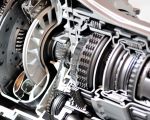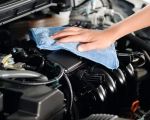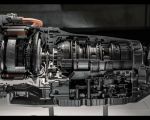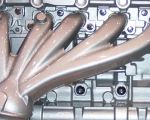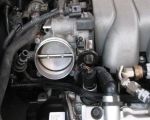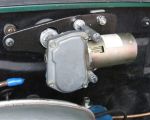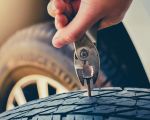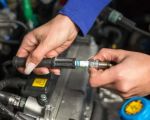How to Fix a Broken Clutch Master Cylinder: Step-by-Step Guide for Drivers
1. Understanding the Clutch Master Cylinder
The clutch master cylinder is a crucial component of your vehicle's clutch system. It plays a key role in transferring hydraulic pressure from the clutch pedal to the slave cylinder, allowing you to disengage the engine from the transmission when shifting gears. When the clutch master cylinder fails, you may experience difficulty in pressing the clutch pedal, trouble shifting gears, or even complete failure of the clutch.
A broken clutch master cylinder can cause your car to become undriveable, but the good news is that it is a repairable issue. In this guide, we’ll walk you through the signs of a failing clutch master cylinder and how you can fix it yourself, or when it’s time to seek professional help.
2. Common Signs of a Broken Clutch Master Cylinder
Before you begin fixing your clutch master cylinder, it’s important to identify whether it is indeed the cause of your clutch issues. Here are some common signs that indicate your clutch master cylinder might be failing:
- Unresponsive or Soft Clutch Pedal: If you press the clutch pedal and it feels unusually soft or doesn’t return to its normal position, the master cylinder could be losing hydraulic pressure.
- Inability to Shift Gears: If you’re having trouble shifting gears or if it feels like your car is stuck in gear, it could be due to a malfunctioning clutch master cylinder.
- Fluid Leaks: A broken clutch master cylinder may result in fluid leaks around the pedal assembly. If you notice hydraulic fluid on the floor or under the car, this could indicate a problem.
- Grinding Noise: A broken master cylinder may cause grinding noises while shifting, as it no longer fully disengages the transmission from the engine.
If you're experiencing any of these symptoms, your clutch master cylinder might be at fault, and it may be time to address the problem.
3. How to Fix a Broken Clutch Master Cylinder
Repairing a broken clutch master cylinder is a task that requires some mechanical knowledge. If you’re comfortable working on your car, you can follow these steps to replace or repair the clutch master cylinder yourself. However, if you’re not experienced with car repairs, it’s always a good idea to consult a professional mechanic.
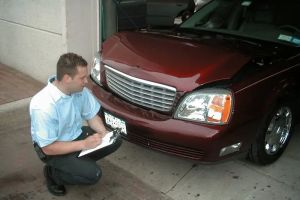
Masters Auto Collision
2090 Hempstead Tpke, East Meadow, NY 11554, USA
3.1 Gather Necessary Tools and Parts
Before beginning the repair, ensure that you have all the tools and parts required for the job:
- Replacement clutch master cylinder
- Brake fluid (specific type recommended for your vehicle)
- Wrenches, pliers, and socket set
- Hydraulic jack and jack stands
- Rags or towels for cleaning up spilled fluid
- Small container or bucket to catch any spilled fluid
If you’re unsure about the correct replacement parts, you can always consult your vehicle's manual or ask a local auto parts store for advice.
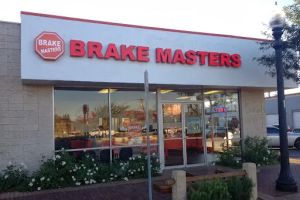
Brake Masters
24411 Main St, Santa Clarita, CA 91321, USA
3.2 Lift the Vehicle and Access the Clutch Master Cylinder
Begin by lifting the front of the vehicle using a hydraulic jack and securing it with jack stands. This will allow you to have enough space to work underneath the vehicle, where the clutch master cylinder is typically located. Once the car is safely lifted, locate the clutch master cylinder, usually near the top of the clutch pedal assembly in the driver’s footwell.
3.3 Disconnect the Hydraulic Lines and Pedal Linkage
Using wrenches or pliers, disconnect the hydraulic lines attached to the clutch master cylinder. Make sure to have a container ready to catch any fluid that may spill out. Afterward, disconnect the linkage that connects the pedal to the master cylinder. Be cautious during this step, as the system may still have fluid in it.
3.4 Remove the Old Clutch Master Cylinder
Once the hydraulic lines and pedal linkage are detached, use a wrench to remove the bolts securing the clutch master cylinder to the vehicle’s firewall. Carefully remove the old master cylinder, taking care not to damage any surrounding components.
3.5 Install the New Clutch Master Cylinder
Now, install the new clutch master cylinder by aligning it with the mounting holes and securing it with bolts. Reconnect the hydraulic lines and pedal linkage, ensuring that all connections are tight and secure.
3.6 Refill Fluid and Bleed the Clutch System
Once the new cylinder is in place, refill the system with the appropriate brake fluid. After refilling, you'll need to bleed the system to remove any air bubbles, which could impair the hydraulic pressure. This step is crucial for ensuring that your clutch functions properly.
To bleed the system, have a helper press the clutch pedal while you open and close the bleeder valve on the slave cylinder to release air. Repeat this process until no more air bubbles are present and the pedal feels firm again.
3.7 Test the Clutch Pedal
Once the system is bled and the fluid levels are topped off, test the clutch pedal to ensure it feels normal. The pedal should be firm and responsive, and the car should shift gears smoothly. If you experience any issues, recheck the connections and fluid levels before attempting to drive the vehicle.
4. When to Call a Professional for Clutch Master Cylinder Repair
While fixing a clutch master cylinder is something you can do yourself if you're mechanically inclined, there are cases where it may be best to call a professional for help. If you're unsure about the repair process or don't have the right tools, it's safer to leave it to a certified mechanic.
Additionally, if you encounter complications such as a broken pedal linkage or damage to other clutch components, a professional mechanic will have the necessary expertise to complete the repair safely and effectively. If you're unable to fix your car on the spot, Rescue & Towing offers reliable towing services to take your vehicle to the nearest auto repair shop.
5. Real-Life Case Study: Clutch Master Cylinder Breakdown on the Road
Imagine you’re driving home after a long day of work, and suddenly, you find that you can’t shift gears properly. Your clutch pedal is soft, and it feels like the clutch isn’t disengaging as it should. In this scenario, John, a driver in a similar situation, realized that his clutch master cylinder had failed while driving on a highway late at night.
John tried to get his car into gear, but it wasn’t possible. Thankfully, he had a roadside assistance plan with Rescue & Towing, who promptly sent a technician to help. The technician diagnosed the problem and suggested towing the car to a local repair shop. Thanks to the quick response and professional help, John was able to get his clutch master cylinder replaced and his car back on the road.
6. When to Call for Towing Services
If you’re experiencing clutch issues that are preventing you from driving your car, don’t hesitate to call for towing assistance. While minor issues can be fixed on-site, some clutch problems require professional repairs at an auto shop. Rescue & Towing offers fast, reliable towing services to ensure your car gets the help it needs quickly.













